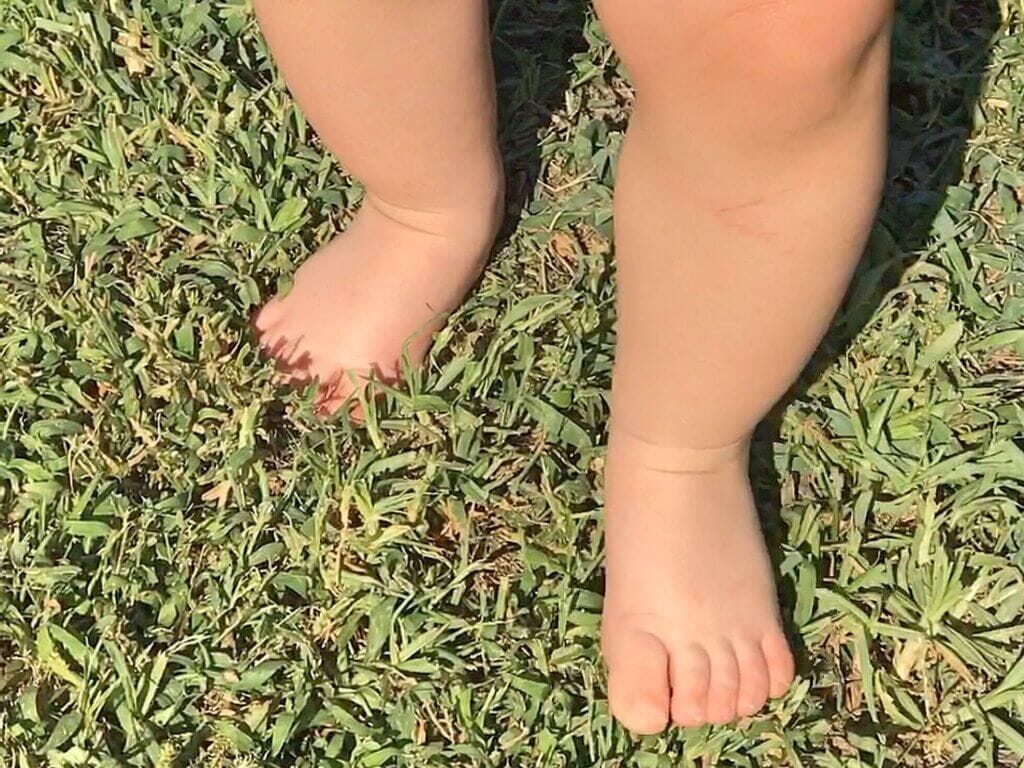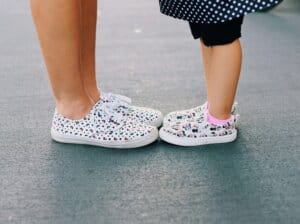
Common Children’s Foot Problems
Common Children’s Foot Problems
There are many common children’s foot problems.
In this blog, we will discuss a few of them, why they occur, and how to treat or prevent them.
Ingrown Toenails
These are common in children and have a variety of causes. Ingrown nails happen when the corner or edge of the nail pierces the skin at the side of the nail and causes a wound and ongoing irritation. They can be prone to repeated infections and can be very painful.
They can be caused by – picking at the nails, leaving sharp or ragged corners or edges, incorrect nail cutting techniques, injury to the nail (such as stubbing the toe), poorly fitting footwear at causes pressure to the nails. Sometimes simply the foot or nail shape which can make someone more prone to developing ingrown nails.
Treatment can be conservative (removing the sharp corner of the nail), or surgical. Nail Surgery involves removing the edge or whole of the nail under local anaesthetic to relieve the problem. It is best to get treatment for ingrown nails as soon as possible before they become too inflamed and chronic. An HCPC registered Podiatrist can help with treatment.
Verrucae
Verrucae are very common in children. There are several types of verruca that can form, depending on the strain of HPV virus that is causing the infection. For many children, verrucae can be painless, and will resolve on their own eventually, or with over-the-counter treatments such as bazooka. However, if verrucae are painful, or becoming very large (more than a few mm in diameter) or are causing concern, then it is best to consult a Podiatrist for treatment options.
Foot pain
There are lots of causes of foot pain in children. Especially in children who participate in sports, sprains and strains can happen often. If any pain in the feet persists for more than a few days, or if your child refuses to wear certain shoes because they hurt, or struggles to participate in their sports, it best to seek advice and treatment.
One common cause of foot pain in children is Sever’s disease. This is not actually a “disease” as such, it is caused when the attachment of the achilles tendon at the back of the heel becomes inflamed, and can happen often in sporty, active children, or those who have undergone a recent growth spurt. If your child complains of ongoing pain in the back of the heel, then consult a Podiatrist.
Athlete’s foot
This condition can affect anyone, and does tend to be more prevalent in adults, but can also affect children. Athlete’s foot can cause itching and sometimes a red rash on the feet. It is caused by an overgrowth of fungus that lives on the skin. Good foot and shoe hygiene is important to prevent athlete’s foot. You can read more about this condition on our blog here.
In-toeing/Out-toeing when walking
In some children, when they begin walking, they may walk with a gait pattern where the toes and feet point outwards (Out-toeing), or inwards (In-toeing). This isn’t usually problematic and, in many cases, will resolve by around 7-8 years of age. If you have concerns about your child’s gait pattern, then consult your Health Visitor, GP or a Podiatrist.
“Curly toes”
Some children may have what we term a “curly toe”. This is a toe that can overlap or underride another toe. In some cases, this may resolve as the child’s feet grow, but in some cases the toe shape may be genetic and can remain once the feet have grown. If the toe shape is not causing discomfort or pressure, then treatment is not normally needed. However, if you do have concerns about the shape of a child’s toes or feet, then consult a Podiatrist, GP, or your Health Visitor.
Toe walking
Many children under the age of 3 will toe walk, especially when barefoot. This will usually correct itself with age, but if it persists, it may be a sign of some muscle tightness/imbalance or underlying neurological problems. As above, if you have concerns about toe-walking over the age of three, consult a Podiatrist, or GP.
Flat feet
Children under the age of five will generally have a flat foot. The arch forms as the feet grow. In around 5% of children, the arch will remain flat as they grow. For the vast majority of children, this will not cause any issues. Provided they are not experiencing any pain or discomfort in the feet, ankles, knees or hips, then a flat foot should not require treatment or investigating. If a child does however experience any of the above symptoms, then intervention may be necessary.
Tips for children’s foot health
- Good foot hygiene. Wash and dry the feet well, especially between the toes.
- Good socks – natural fibres like bamboo and cotton are best. Change socks daily and check for the correct size and fit so they do not squash the toes.
- Correct nail cutting technique – cut the nail straight across if possible, and gently file down any sharp corners. Check your child’s toenails and discourage picking if they tend to pick the nails.
- Check the skin regularly for corns, calluses and verrucae.
- Good footwear is especially important. Always have children’s feet professionally measured when buying new shoes.
For more information on children’s foot health, visit the NHS website here.
Anna Conway
BSc (Hons), MCPod, SRCh, PGcert Podiatry
Owner, Lead Podiatrist


